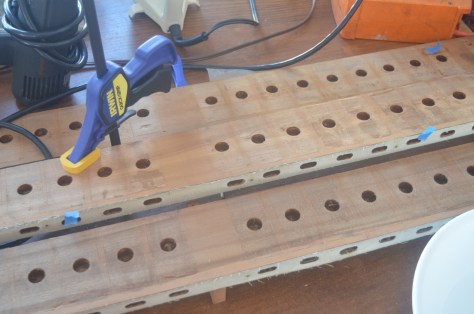This topic was already covered somewhat in an earlier post (click here to revisit), but at least I will reoffer the salient points with updates where necessary, and some images.
First the boards must be joined by means of a hinge which is strong and flexible.
I followed the general idea of Bruce Newman’s method, seen here

Once hinged, time to recover.
Your cloth of choice, with appropriate adhesive, and sharp scissors are the order of the day.
I was fortunate to be able to get traditional thin rubberized cotton cloth, which was of course mounted with hide glue. The future availability of this cloth is in question, at the time of this publication.
As with other operations, it is a matter of getting the glue exactly where you need it, and avoiding it where you do not, using just the right amount. Experience will show you the way.


If you have done good work, the cloth (and the glue joint) will form an airtight seal around the perimeter of the pneumatic. It is still advisable to renew the sealer on the top face of the moveable board, and the exposed “overhang” section of the stationary board. Some rebuilders choose to seal the insides of the boards, before recovering.
I chose to do it last, after the hangers had been reattached. As Bruce Newman put it, this way also provides extra “insurance” around the glue joint, especially at the corners of the boards where it can be a little tricky. Obviously, we do not want to get shellac sealant on the newly applied cloth, so work carefully!

And so too with previous operations, uniformity is very much desired to assure consistent performance. If your first few attempts are not great (as mine were), take them apart and redo them. You will be happier in the long run. The pneumatics (along with the other bellows in the motor and pump) are under constant repetitive use, so attention to detail is paramount. Take the time to get it right!

Test your work by closing each pneumatic, plugging the hole and trying to pull open, you should feel stiff resistance to moderate pressure (admittedly, it is awkward to do this step).
If all your pneumatics are tight, onward to the next phase.













